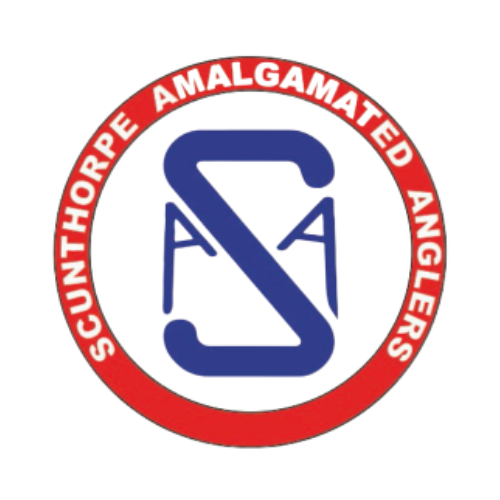SAA will from time-to-time request support to assist with maintenance and project work.
Those attending are advised that they should wear old clothes and, if possible, bring a stout pair of gloves with them. If you have waders or wellington boots, please bring them. Most tools are provided but a spade, hand saw, and a hammer are often useful. In the event of threatened severe weather conditions please check with the fisheries officer the previous evening.
The Club will provide the training and supervision necessary to safely carry out any work tasks. Generic risk assessments will be discussed prior to any planned work. Arising work should prompt the individual to take time before starting to ask, ‘How can this hurt me?’ However, if a member is unsure how to perform a certain task or feels that it would be unsafe to perform a specific task, then it is the member’s duty to report this to the working party’s supervisor.
More specific personal protective equipment will be provided by the Club when necessary.
Club Safety Policy and Arrangements
Policy Statement
The Club is committed to ensuring that it will do all that is reasonably practicable to prevent injury and damage to property. We will have due regard for protecting all other people who come into contact with the club activities. When dealing with health and safety issues officials, members, and volunteers carrying out activities have a clear understanding of the need to operate within the context of this policy and arrangements. Officials, members and volunteers involved in events or work parties will take all reasonable steps to safeguard all those taking part in activities and those who may be affected by them. The Club will co-operate with other organisations (eg landowners) to ensure risks are properly controlled.
Health and Safety Arrangements
Duty of Care
The Club requires that all people involved in organising activities, work parties and day to day management consider the consequences of their acts and ensure that those acts do not give rise to a foreseeable risk of injury to any other person or themselves.
Risk Assessment
The Club will ensure that suitable risk assessments are carried out and the results of the assessments are implemented. The aim of risk assessment is to avoid harm and to promote the health, safety and welfare of all involved or who may be affected by an activity (work or leisure). As members of the Club, administrators and event organisers have not only a moral but also a legal responsibility to ensure that club activities and any organized events are as safe as practicably possible. Risk assessments will be carried out with a view of minimizing risk as well as reducing the likelihood of accidents happening; in the event of an accident, it will also reduce the chance of serious injury or ill health. Risk Assessment procedures require the Assessors to consider:
- Hazards – anything that has potential to cause harm.
- Who could be affected?
- Measures already in place – to avoid possible harm.
- Risk – the likelihood that something could happen, on a scale of ‘high’, ‘medium’, ‘low.’
- Further actions – what more can be reasonably done to reduce the likelihood of an accident happening. The Risk Assessment document will be completed and signed by the responsible person (administrator or organiser}, key actions will be conveyed (where appropriate read and understood) to all participating so that they know and understand what is expected of them.
Key Responsibilities
Person in charge (e.g., Chairman)
- Ensure this policy is adhered to.
- Ensure Risk Assessments have been carried out.
- Brief other officials/participants on all matters relating to organizational activities especially risk management and allocation of equipment and resources.
Officials and Organisers
Club officials, administrators and/or organisers (persons in charge of a work activity or events) are primarily responsible for ensuring safety is properly managed. He/she has the responsibility to undertake all measures available to ensure the safety and well-being of all persons taking part in an activity/event and those who could be affected by the event. The success of an activity/event depends on effective management. The event organizer must ensure that there is effective:
- Planning
- Delegation
- Resources allocation (people and equipment)
- Decision making
- Clear (and effective) communication.
Responsibility of volunteers
- Turn up at the venue in sufficient time to prepare for the event/activity.
- Attend briefing (and debriefing)
- Carry out allocated duties in a professional manner.
Coaches and Helpers
All coaches participating in activities organized by the Club must hold an appropriate qualification. During events and activities, the ratio of responsible adults (coaches) to young people depends in the main on the age and ability of participants but is never too little to ensure the safety of participants. Aims should be made to attain the following ratios:
- Novice – 1 adult to 2 young people
- Intermediate – 1 adult to 3-5 young people
- Senior – 1 adult to 6-8 young people
First Aid & Incident & Near Miss reporting
First Aid
All responsible persons must have attended basic first aid instruction.
Incident and Near Miss
Incident reporting procedure in the event of an incident, near miss or accident involving personal injury the following procedures must be followed: All injuries other than minor cuts and abrasions should be recorded on ‘accident forms’ (proforma available). It is a requirement that both the injured party and the responsible person sign the form. If the circumstances of the accident are not clear – notes of the accident must be made on the form. If there are doubts about the nature or seriousness of the injury, the responsible person will ensure the injured person is given appropriate medical attention as soon as possible. The same form can also be used for near miss reporting.



